Are you starting a DIY project to replace the headlights in your car? You may have heard that there are different headlights, but how can you know which one is right for your vehicle? Don’t worry – we’ll help you figure it out!
Headlight types vary based on the technology used and can affect the brightness, color temperature, and energy efficiency. Understanding what kind of headlights you have will not only help you choose the correct replacement but also give you a better understanding of your car’s lighting system.
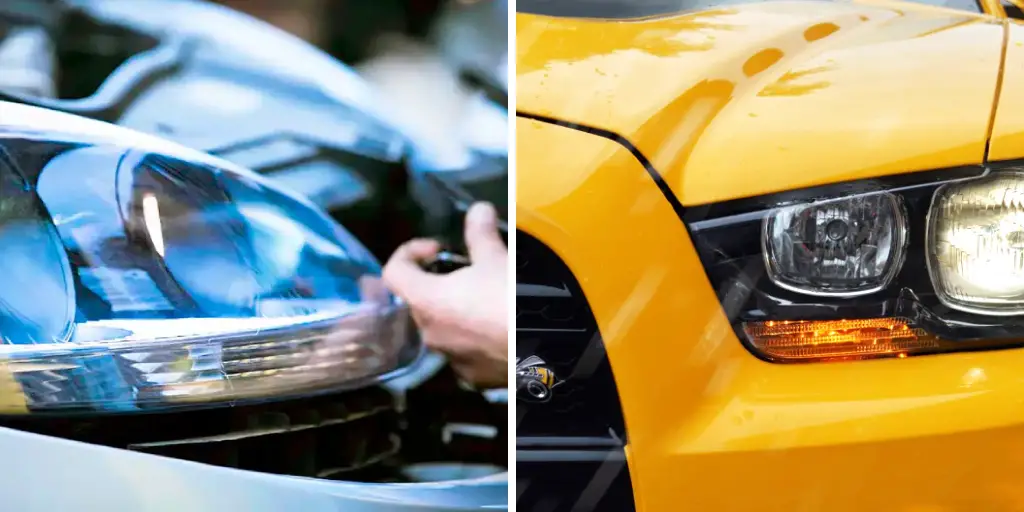
This guide on how do I know what kind of headlights I have, will walk you through everything you need to know about identifying and replacing the headlights on your car. So if you’re ready to level up your auto knowledge, read on!
What Will You Need?
Before diving into the different types of headlights, let’s ensure you have all the necessary tools to identify them. You’ll need a few things:
- Your car manual
- A flashlight
- Internet access (optional)
Once you have these tools, let’s identify your headlights.
10 Easy Steps on How Do I Know What Kind of Headlights I Have
Step 1. Check Your Vehicle’s Manual:
The easiest way to identify your headlights is to consult your vehicle’s manual. This document usually contains detailed information about the components of your car, including the type of headlights installed. Look for the section about headlights or lighting; it should have the answers you’re looking for.
Step 2. Inspect Your Headlights:
Inspect the headlights directly if the manual isn’t helpful or you don’t have it. Use your flashlight to illuminate the back of the headlight assembly. You might find labels or markings that indicate the type of headlight. For example, if you see “HID” or “LED,” you have high-intensity discharge or light-emitting diode headlights, respectively. Remember to do this safely, ensuring the car’s engine is off and the lights are cool to touch.
Step 3. Look for Color Differences:
Another way to determine the type of headlights you have is by observing the color of the light they emit. Halogen headlights typically emit a yellowish light, while High-Intensity Discharge (HID) headlights often produce a bright white or slightly blue light. LED headlights, on the other hand, tend to emit a bright, pure white light. Please remember to do this observation safely without directly looking into the light to avoid eye damage.
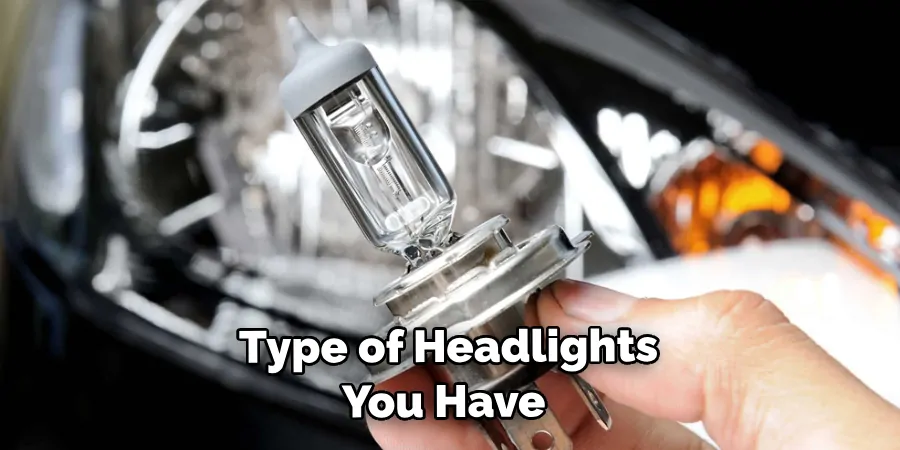
Step 4. Observe the Beam Pattern:
The pattern of light that your headlight beams create on the road can also help identify their type. Halogen headlights usually produce a less defined beam pattern, and the light disperses widely. High-Intensity Discharge (HID) or Xenon headlights emit a very bright and broad beam that covers a large area on the road ahead.
LED headlights provide a very defined beam pattern, illuminating the road without scattering the light. Observing this beam pattern helps you interpret the type of headlight your vehicle uses. Remember to do this safely, preferably in a dark area away from traffic.
Step 5. Consider the Age of Your Vehicle:
Typically, older vehicles come equipped with halogen headlights, while newer models might have LEDs or HIDs. If your vehicle is relatively old and you haven’t changed the headlights since purchase, they are likely to be halogen. Conversely, if your vehicle is a newer model, it may have LED or HID headlights.
However, this is not a foolproof method, as some newer models still use halogen headlights, and some people replace their old halogen lights with newer types. It’s always better to verify using other methods mentioned above.
Step 6. Evaluate Energy Efficiency and Lifespan:
Headlights can also be differentiated based on their energy efficiency and lifespan. If your headlights have a long lifespan and consume less energy, they might be LEDs, known for their superior efficiency and longevity compared to other types.
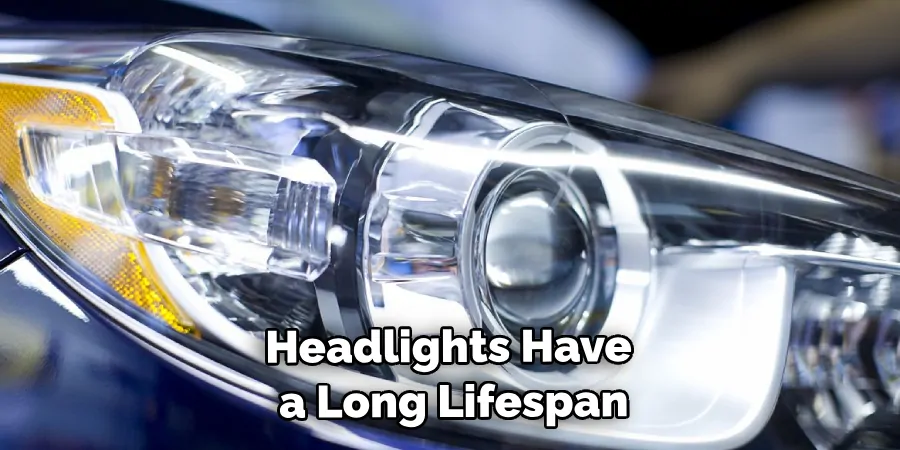
Halogen bulbs, although cheaper, tend to have a shorter lifespan. HID bulbs also have a longer lifespan than halogens but are usually less energy-efficient than LEDs. However, remember that a bulb’s lifespan can also be influenced by how often you use your headlights.
Step 7. Find the Model Number:
Another effective way to determine the type of headlights you have is by looking for the model number. It is usually printed on the bulb or the headlight assembly. Once you have the model number, you can search online to find specifications that should reveal the type of headlight. If you’re unsure where to find the model number, your car’s manual may have this information, or a quick online search for your car model and ‘headlight model number location’ might yield helpful results.
Step 8. Seek Professional Help:
If you’ve tried all the above steps and are still trying to decide the type of headlights your vehicle has, consider contacting a professional. Mechanics or auto parts store employees have the experience to quickly identify your headlight type. They can also provide valuable advice if you’re considering a headlight upgrade. Remember, it’s always better to ask for help than to purchase the wrong type of headlights for your vehicle.
Step 9. Use a Headlight Identifier Tool Online:
If the above methods prove challenging or inconclusive, you can use online tools designed to help identify your car’s headlight type. Websites of auto parts retailers often provide such tools. You’ll need to enter the make, model, and year of your vehicle, and the tool should return the information about the type of headlights your truck came with from the factory. Bear in mind that this method assumes that the headlights have stayed the same since the vehicle was new.
Step 10. Compare with Other Cars:
The final step is to compare your car’s headlights with other vehicles. This can be particularly helpful if you know someone with the same model and year as your vehicle or if you can compare your headlights with those on display at an auto dealership.
This method, combined with the others mentioned above, should give you a firm answer on what type of headlights you have. Please remember that while comparing, ensure you do not cause any inconvenience to other drivers or violate traffic rules.
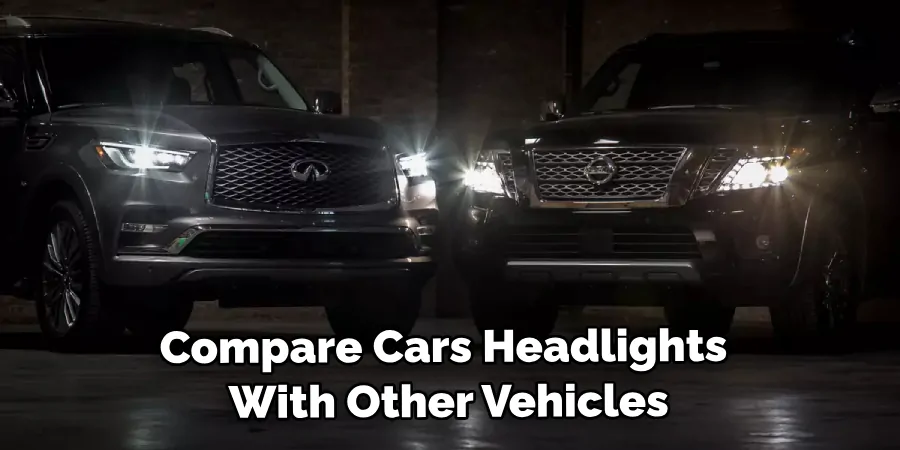
By following the above steps, you can determine what type of headlights your vehicle has. Knowing this information is helpful for maintenance and replacement purposes.
5 Additional Tips and Tricks
- Check Your Vehicle’s Manual: The manual with your vehicle will typically list the type of headlights your vehicle has. This is the most direct and accurate way to find out.
- Inspect the Bulbs: You can often determine the type of headlights you have by visually inspecting the bulbs. Halogen bulbs are usually straightforward, HID bulbs are often blue, and LEDs are small, yellow squares.
- Check the Headlight Casing: The casing around your headlights can also give clues as to your type of headlights. For instance, projector headlight casings are round and reflective, while reflector headlight casings are often made of complex, mirrored plastic.
- Visit the Car Manufacturer’s Website: Most manufacturers have detailed specifications on their websites, including information about the type of headlights in each model.
- Consult a Mechanic or Auto Parts Store: If you need clarification, consult a professional. A knowledgeable mechanic or auto parts store can identify the type of headlights your car uses.
With these tips in mind, you should now have a better understanding of how to determine what kind of headlights your vehicle has.
5 Things You Should Avoid
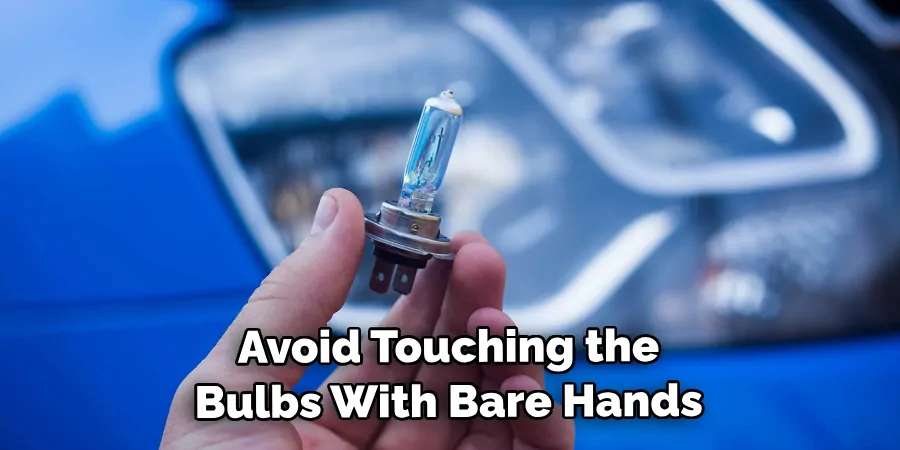
- Avoid Guesswork: Don’t just guess the type of your headlights. Incorrectly identifying your headlights could lead to purchasing and installing the wrong kind, potentially damaging your vehicle or reducing visibility on the road.
- Avoid Touching the Bulbs with Bare Hands: Especially for halogen bulbs, the oil from your skin can create hot spots on the bulb and reduce its lifespan. Always use gloves or a cloth when handling.
- Avoid Ignoring the Signs of Deterioration: If your headlights are dimming, flickering, or changing colors, it’s time to replace them. Don’t wait until they completely stop working.
- Avoid DIY if You’re Not Confident: Don’t force it if you’re uncomfortable or unsure about replacing the bulbs yourself. The risk of damaging your headlights or vehicle is not worth it. Consult a professional instead.
- Avoid Cheap Knock-offs: While cheaper options might be tempting, they often don’t meet safety standards or provide adequate lighting. Always choose quality over cost when it comes to safety features like headlights.
By avoiding these common mistakes, you can ensure that your headlights stay in top condition and provide optimal visibility on the road.
Conclusion
In conclusion, this article on how do I know what kind of headlights I have, informed you on ways to determine the type of headlights you have. If you are stumped, consult a professional installer to learn more about your vehicle’s headlights and get it done quickly and safely. Don’t ever assume that all cars look or perform the same.
Keep exploring, researching, and adapting to your unique situation as part of your journey for safe driving. Taking proper care of your headlights will extend their life span and drastically reduce your chances of getting into an accident – potentially saving you time, money, and energy in the long run.
Invest in yourself and your vehicle by finding out which headlight type is right for your car today!

